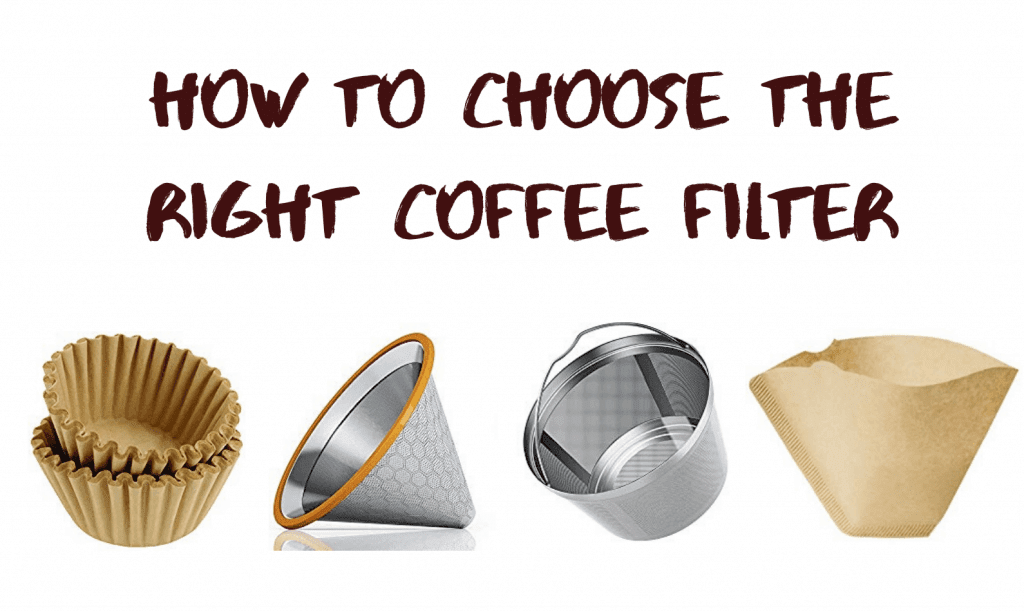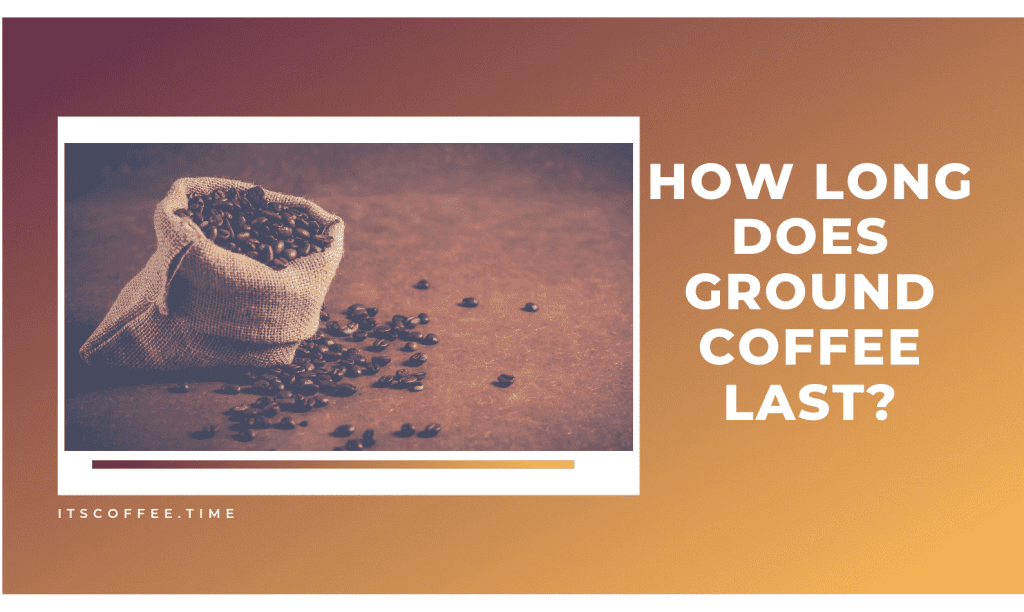The Complete Guide to Choose the Right Coffee Filter: If you’re a coffee lover and can’t begin your day while not having a cup of coffee, you would possibly have detected the controversy between bleached and undyed coffee filters. There are two types of coffee filters: bleached and unbleached filters. Many people believe the unbleached coffee filter is a lot better than the bleached coffee filter, while some feel the difference between the two is not much. During this article, we will clear the air for you by discussing the various types of coffee filters and helping you choose the right coffee filter for yourself.
Bleached Vs. Unbleached Coffee Filter
Bleached Coffee Filter
In the late 80s, there was a widespread concern among coffee lovers that bleached coffee filters were not healthy, but over time, that fear has died down. Today it is popularly used as a safe option for brewing coffee. And the strength is that the bleach in it won’t leave any dangerous style in your mouth once you sip your coffee.
Bleached filters are papers that go through applying bleach to them that makes them look white in color. There are two chemicals used in the process of bleaching: chlorine and oxygen bleach. The chlorine used here is the same one that is used in cleaning pools. However, it is not considered high quality as coffee filters that used oxygen bleach in them. If you’re searching for bleached coffee filters, then we tend to suggest you look for coffee filters that use element bleach in them.
Bleach is not eco-friendly overall, and it has negative environmental effects. There is an extra step in producing them that adds to the pollution level after they are discarded. Though the amount of bleach used in it is quite less, it has its adverse effect. Oxygen bleach is slightly better than chlorine in this matter.
Unbleached Coffee Filter
In contrast to the bleached coffee filters, the unbleached variant does not boast an ultra-white appearance, but they are organic in nature and eco-friendly. All paper is brown in color and needs to be bleached for the white outlook. No additional processing is required in the manufacturing of unbleached coffee filters. Once they are discarded, they are nowhere as harmful to the surrounding environment as those coffee filters treated with bleaching agents such as chlorine. There are certain differences that you need to be familiar with before beginning using unbleached coffee filters. If an unbleached coffee filter is utilized in the coffee maker, you will find out that a slight flavor of paper is imparted to the coffee.
Considerations Before Buying Right Coffee Filter
-
Bleached Coffee filters make no impact on taste
There is a common belief amongst coffee aficionados that the use of bleached or unbleached coffee filters has a bearing on the coffee’s eventual taste. However, you will be astounded to learn that this is merely a myth, and there is no such reality in this misconception. It does not matter whether you go for the bleached coffee filter or the unbleached one, as it does not modify the overall taste of the coffee. The white color of the filters is not due to a large amount of bleach, and neither does it alter the taste nor has any harmful repercussions on our health.
-
Quality
Keep in mind that bleached or unbleached coffee filters do not have any bearing on the coffee’s overall flavor. The quality of the filter can, however, have serious implications in terms of taste, so avoid making any compromise when purchasing a good quality coffee filter.
When choosing a coffee filter, ensure that you opt for the appropriate size of the coffee filter following the brewing technique you are employing and the appropriate thickness of the filter. Water seeps through easily in thinner coffee filters, which tends to impact the brewing procedure. Thicker coffee filters are expensive in terms of price, but the cost difference is minuscule, so it should not affect your decision-making capabilities.
-
Price
Now that we have concluded that quality is of paramount significance and the only difference between bleached and unbleached coffee filters is in terms of the color let’s discuss the price associated with different kinds of filters. Unbleached filters undergo fewer manufacturing processes, yet they are costly in contrast to their bleached counterparts.
So, if you are looking to save some money up your sleeves, it is judicious to opt for a coffee filter that is bleached using oxygen and thicker in contrast to the other varieties available out there. Of course, you can always go for the unbleached coffee filter if you have concerns for the environment but keep in mind that they cost slightly more than the bleached ones.
How to Take Away the Papery Style of Bleached Filter in Your Coffee?
Here’s one thing you would like to grasp concerning uncolored coffee filters: whenever you pour the coffee through it, it leaves a small style of paper within the coffee. Every time that happens, try to prevent it by following these five steps. These three steps will ensure that the taste of the paper does not pass on to your coffee the next time.
- Put the filter in the brewing machine.
- Pour hot water over it to make the filter wet before use.
- Throw away the water that you used.
How to Choose The Right Coffee Filter? What is the Best Coffee Filter?
As discussed above, there are minimal differences between bleached and unbleached coffee filters. Of course, bleached filters go through additional manufacturing processes, but neither of the two types affects the coffee’s overall flavor. So, you can opt for any of the two types.
Unbleached filters are more environmentally friendly so if you have reservations for the ecosystem, then prefer them over the bleached ones. Whether you opt for the bleached filters or the unbleached ones, remember not to compromise the overall quality of the filters. That tends to have negative repercussions on the taste of the coffee. So, ensure that the filter is of the appropriate size and thickness so you can brew a brilliant cup of coffee following your preference.
The question that springs to one’s mind are which one makes the best coffee. Surely, what makes the best coffee is highly subjective, and we believe that what one thinks is the best coffee is not necessarily what one thinks is the best coffee. So, to resolve this conundrum or even add more substance to it, let’s analyze these different filters and find out for ourselves the best one amongst them.
Paper Vs. Metal Coffee Filters

It can be quite a complicated decision to make when it comes to choosing between the two types. So, we will do some brainstorming and answer a few questions that spring to our minds. We should determine the best coffee filter out of the two by the end of it all.
Price
Metal filter prices are quite paper coffee filters, and it mustn’t be a surprise for you. If you purchase paper filters in a pack, it’ll be a cost-saver for you. However, you’ve got to refill them over and all over again to look at your consumption. In this concern, the metal filter is a better option as you do not have to take the pain of refilling, and it will be a one-time purchase for you.
Environmental Friendly
It is continually judicious to shop for eco-friendly merchandise from the market, more so in kitchen items. In this case, metal filters are higher than paper filters as you are doing not have to be compelled to throw paper or use things that have bleach like chlorine in them as it has an adverse effect on the environment. If you are affected by the pollution level around you and want to not add on to it – go for metal coffee filters.
Easy For Cleanup
This can vary from one’s preference to another. But in our view, a paper filter is easier to clean than a metal coffee filter. A paper filter has to be lifted and discarded, while a metal filter needs to be dumped and then rinsed after each pot. A metal coffee filter will have to be cleaned either in the sink or dishwasher to ensure that it remains clean and ready for use.
What is the Best Choice (Paper vs. Metal Coffee Filters)?
These debates between paper and metal filters, moreover as between uncolored and bleached coffee filters, are there for a protracted time currently and can still be there. There are some stark differences between them but in the end, what matters is whether it can brew coffee of good taste for you or not. Both the filters have their distinctive manner of producing coffee and whichever you decide on depends on your usage and style entirely.
Things to Consider (Shape)
Conical
Conical or cone-style filters tend to be the favorite among more dedicated homebrewers. They come in two basic types. One is shaped like a standard cone, like a party hat. The other also has a round opening, but instead of coming to one point at the tip, it has two sides that taper into a shorter line.
Basket
The filter form that seemingly comes into your head once somebody mentions a “coffee filter” is the basket filter. Also referred to as the cake or-flat bottom filter, these filters are either formed like cake liners with folds around the sides or like buckets with sleek edges.
Disk
Lastly, we have the disk filter. These are mainly used for AeroPresses and occasionally as replacements for French Press filters. Disk filters are much smaller than the other two.
Also, check out Best Instant Coffee to buy in 2022
Conclusion: How to Choose The Right Coffee Filter?
So to keep it simple, choosing between bleached and unbleached isn’t going to change the taste of your coffee, but the choice between disposable paper and reusable metal will. Cone filters will give you better saturation and extraction than basket filters, and disk filters are for AeroPress and French Presses. No matter what filter you choose, we hope the coffee is everything you want it to be.








